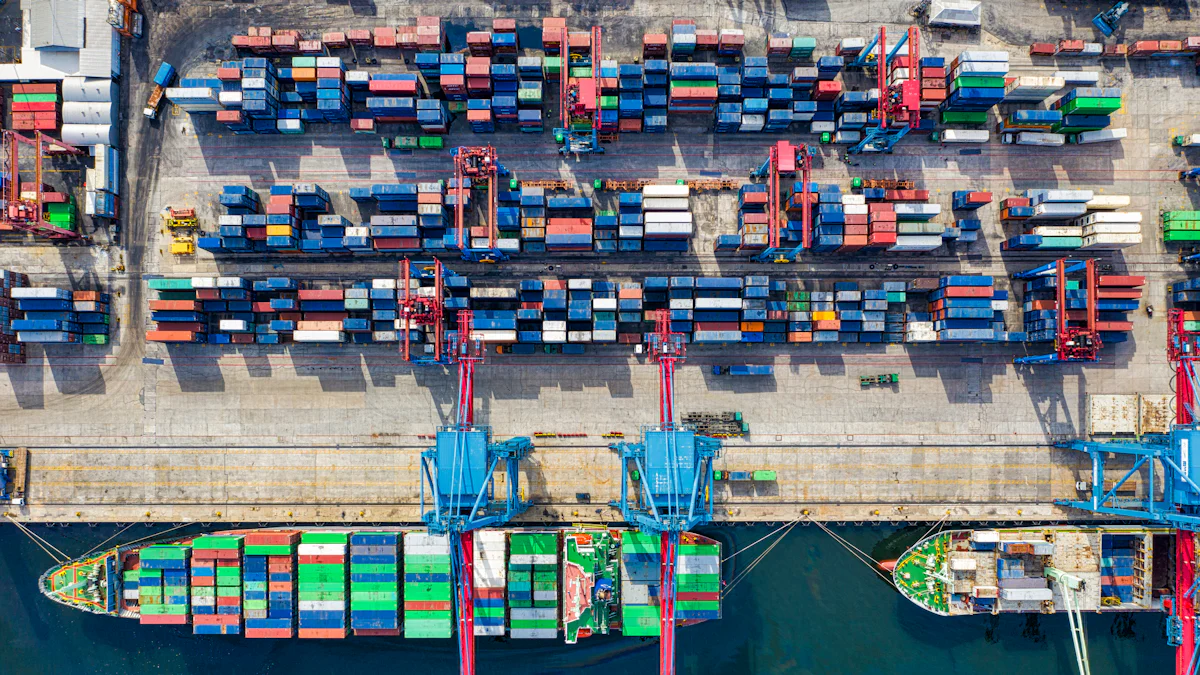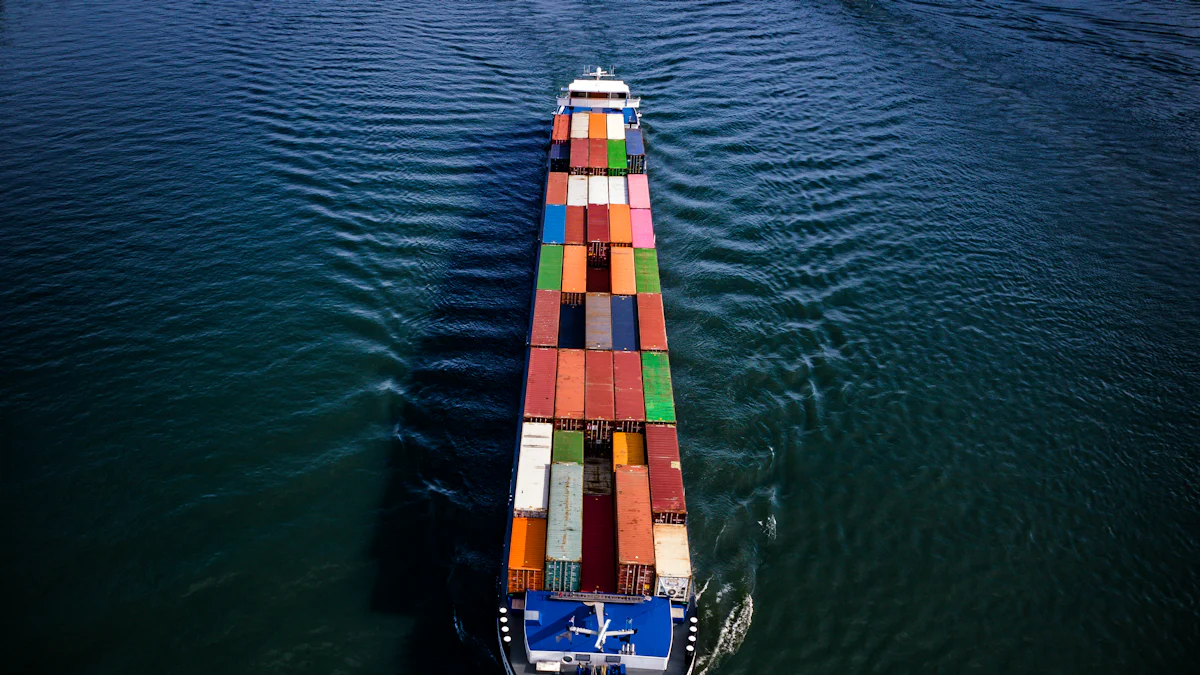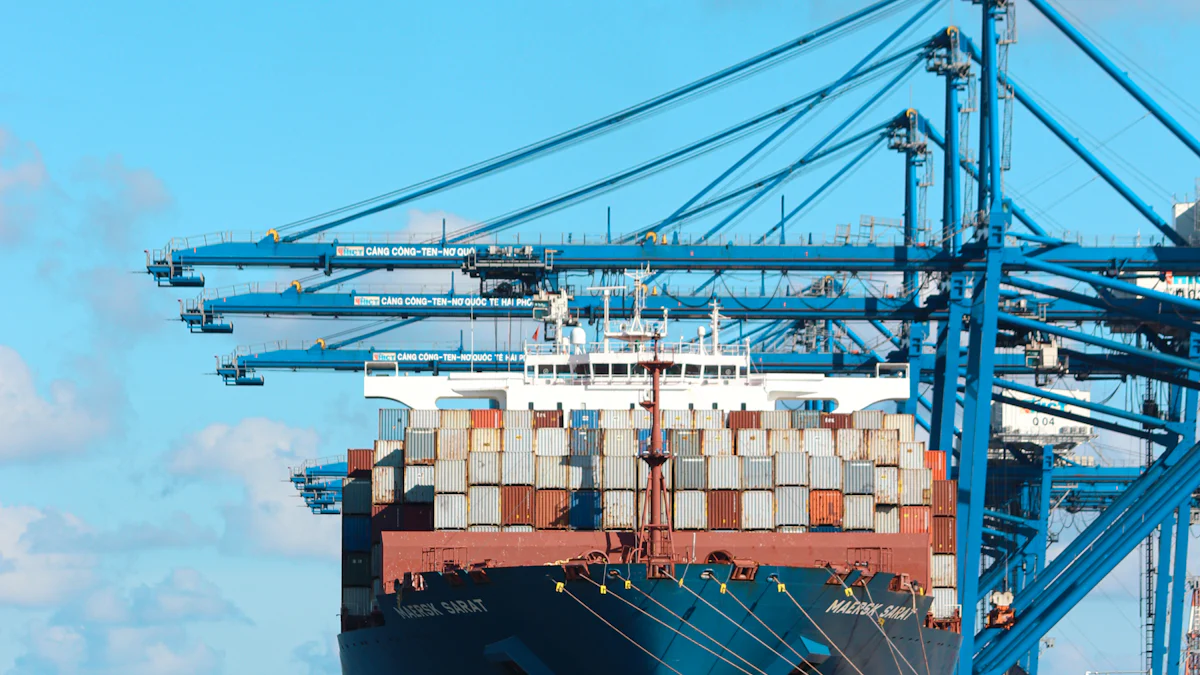Challenges and Opportunities: How Companies Can Navigate the Complex Cross-Border Logistics Environment

Cross-Border Logistics plays a crucial role in global trade. The logistics market will reach $6.33 trillion in 2024, reflecting an 8.8% annual increase. Companies must understand the challenges and opportunities in this environment. Efficient logistics can significantly boost trade, with global turnover exceeding USD 4.3 trillion. JUSDA leads in innovative solutions and efficiency in cross-border trade. Businesses need to navigate this complex landscape to thrive.
Understanding the Cross-Border Logistics Environment
Cross-Border Logistics involves several crucial components. Each component plays a vital role in ensuring smooth operations. Understanding these elements helps businesses navigate the complexities of international trade.
Key Components of Cross-Border Logistics
Transportation and Shipping
Transportation forms the backbone of Cross-Border Logistics. Goods move from one country to another through various modes. Companies use air, sea, rail, and road transport. Each mode offers unique advantages. Air transport provides speed. Sea transport offers cost-effectiveness for large shipments. Rail and road transport ensure flexibility and accessibility. Efficient transportation reduces costs and delivery times. Businesses must choose the right mode based on their needs.
Customs and Regulations
Customs regulations impact Cross-Border Logistics significantly. Each country enforces different rules and tariffs. Companies must comply with these regulations to avoid delays. Proper documentation ensures smooth customs clearance. Import duties and taxes vary by country. Understanding these costs helps in pricing strategies. Businesses must stay updated on changing regulations. Compliance minimizes risks and enhances efficiency.
The Role of Technology in Logistics
Technology transforms Cross-Border Logistics. Advanced tools improve efficiency and accuracy. Automation and data analytics play a significant role in modern logistics.
Automation and AI
Automation streamlines Cross-Border Logistics processes. Automated systems handle repetitive tasks efficiently. Artificial Intelligence (AI) enhances decision-making. AI predicts demand and optimizes routes. Companies use AI for inventory management. Automation reduces human error and increases productivity. Businesses benefit from faster and more reliable operations.
Data Analytics and Tracking
Data analytics provides valuable insights into Cross-Border Logistics. Companies analyze data to improve performance. Tracking systems offer real-time visibility of shipments. Businesses monitor goods throughout the supply chain. Tracking reduces the risk of loss or damage. Data-driven decisions enhance customer satisfaction. Companies gain a competitive edge through efficient logistics.
Challenges in Cross-Border Logistics

Cross-Border Logistics presents numerous challenges for companies. Understanding these challenges helps businesses navigate international trade effectively. Companies must address regulatory and compliance issues to ensure smooth operations.
Regulatory and Compliance Issues
Regulatory and compliance issues pose significant hurdles in Cross-Border Logistics. Companies face varying tariffs and trade barriers across different countries. Free Trade Agreements (FTAs) and the General Agreement on Tariffs and Trade (GATT 1947) influence these tariffs. Businesses must stay informed about these agreements to manage costs effectively. Trade barriers can delay shipments and increase expenses. Companies need strategies to overcome these obstacles.
Tariffs and Trade Barriers
Tariffs and trade barriers impact pricing strategies in Cross-Border Logistics. Businesses encounter different rates in each country. Companies must calculate these tariffs accurately to maintain profitability. Trade barriers can restrict the flow of goods. Businesses should explore ways to minimize these barriers. Understanding international trade agreements helps in this endeavor.
Documentation and Paperwork
Documentation and paperwork are crucial in Cross-Border Logistics. Each country requires specific documents for customs clearance. Companies must prepare accurate paperwork to avoid delays. Proper documentation ensures compliance with regulations. Businesses need efficient systems to manage these documents. Streamlined processes reduce the risk of errors and enhance efficiency.
Operational Challenges
Operational challenges affect the efficiency of Cross-Border Logistics. Companies must address supply chain disruptions and cost management issues to succeed.
Supply Chain Disruptions
Supply chain disruptions can occur at any stage of Cross-Border Logistics. Natural disasters, political instability, and transportation delays contribute to these disruptions. Companies must develop contingency plans to mitigate these risks. Efficient logistics systems help in managing disruptions effectively. Businesses should invest in technology to enhance supply chain resilience.
Cost Management
Cost management is a critical aspect of Cross-Border Logistics. Companies face fluctuating costs in transportation, tariffs, and storage. Effective cost management strategies are essential for maintaining profitability. Businesses should analyze costs regularly to identify areas for improvement. Technology plays a vital role in optimizing logistics costs.
Opportunities in Cross-Border Logistics

Cross-Border Logistics offers significant opportunities for businesses. Companies can expand their reach and enhance operations through strategic approaches.
Market Expansion and Growth
Access to New Markets
Businesses can enter new markets through Cross-Border Logistics. Companies can reach a broader audience by understanding local market needs. Successful market entry requires adapting products and services. Businesses should consider cultural preferences and purchasing behaviors. Effective strategies lead to increased sales and brand recognition.
Diversification of Supply Chains
Cross-Border Logistics allows for supply chain diversification. Companies can source materials from various regions. Diversified supply chains reduce dependency on a single supplier. Businesses can mitigate risks associated with supply disruptions. Companies benefit from cost advantages and improved resource allocation. Diversification enhances resilience and competitiveness.
Technological Advancements
Blockchain and Security
Blockchain technology enhances security in Cross-Border Logistics. Companies can ensure data integrity and transparency. Blockchain records transactions in an immutable ledger. Businesses can track shipments and verify authenticity. Enhanced security reduces fraud and errors. Companies gain trust and confidence from customers and partners.
Enhanced Customer Experience
Technology improves customer experience in Cross-Border Logistics. Companies can provide real-time tracking and updates. Customers appreciate timely information about their shipments. Businesses can offer personalized services and support. Enhanced customer experience leads to increased satisfaction and loyalty. Companies can differentiate themselves in a competitive market.
Strategies for Navigating the Complex Environment
Cross-Border Logistics presents unique challenges. Companies must adopt effective strategies to navigate this complex environment. Building resilient supply chains and leveraging technology are crucial steps.
Building Resilient Supply Chains
Building a resilient supply chain is essential in Cross-Border Logistics. Companies must focus on risk management and contingency planning. These strategies ensure stability and minimize disruptions.
Risk Management and Contingency Planning
Risk management plays a vital role in Cross-Border Logistics. Companies must identify potential risks and develop strategies to mitigate them. Contingency planning helps businesses prepare for unexpected events. Companies can maintain operations during disruptions with effective risk management. This approach ensures long-term success and stability.
Collaboration and Partnerships
Collaboration enhances resilience in Cross-Border Logistics. Companies should build strong partnerships with suppliers and service providers. These relationships improve communication and coordination. Collaboration enables businesses to share resources and expertise. Companies can achieve greater efficiency and reduce costs through partnerships. This strategy strengthens the entire supply chain.
Leveraging Technology for Efficiency
Technology is a powerful tool in Cross-Border Logistics. Companies must leverage advanced solutions to improve efficiency. Implementing software and using real-time data are key strategies.
Implementing Advanced Software Solutions
Advanced software solutions streamline Cross-Border Logistics. Companies can automate processes and reduce manual tasks. Software improves accuracy and reduces errors. Businesses benefit from faster and more efficient operations. Implementing software solutions enhances overall productivity.
Real-Time Data Utilization
Real-time data is crucial in Cross-Border Logistics. Companies can monitor shipments and track progress. Data provides valuable insights into supply chain performance. Businesses can make informed decisions based on real-time information. Using data improves efficiency and enhances customer satisfaction.
Cross-Border Logistics requires strategic planning and execution. Building resilient supply chains and leveraging technology are essential. These strategies help companies navigate the complex environment effectively.
JUSDA's Role in Cross-Border Logistics
JUSDA Logistic Technology plays a pivotal role in the realm of Cross-Border Logistics. The company excels by offering comprehensive solutions that enhance efficiency and sustainability. JUSDA's innovative approach ensures businesses can navigate the complexities of international trade with ease.
JUSDA's Comprehensive Solutions
JusTrade Platform for Regulatory Compliance
The JusTrade Platform stands as a cornerstone for regulatory compliance in Cross-Border Logistics. Companies face diverse customs regulations across countries. The JusTrade Platform simplifies these challenges by integrating resources from customs clearance, taxation, finance, and transportation. This integration reduces transaction costs and streamlines international trade procedures. Businesses benefit from a seamless experience, ensuring compliance and minimizing delays.
JusLink for Supply Chain Visibility
JusLink offers unparalleled supply chain visibility. Real-time monitoring of shipments becomes possible through this platform. Companies gain insights into every link of their supply chain. JusLink enhances decision-making by providing accurate data. Businesses can track goods efficiently, reducing risks associated with loss or damage. This visibility fosters trust and reliability in Cross-Border Logistics.
JUSDA's Technological Integration
Big Data and IoT Applications
JUSDA Logistic Technology harnesses the power of Big Data and IoT applications. These technologies optimize logistics strategies and enhance operational efficiency. Companies can analyze vast amounts of data to improve performance. IoT devices provide real-time updates on shipment conditions. This integration leads to better resource allocation and cost savings. Businesses achieve greater efficiency in Cross-Border Logistics through data-driven insights.
Cloud Platforms for Resource Optimization
Cloud platforms play a crucial role in JUSDA's strategy for resource optimization. Companies can store and access data seamlessly. Cloud technology ensures scalability and flexibility in operations. Businesses can adapt to changing demands without significant infrastructure changes. This adaptability enhances the overall efficiency of Cross-Border Logistics. Companies benefit from reduced costs and improved service delivery.
JUSDA Logistic Technology stands at the forefront of Cross-Border Logistics. The company's commitment to innovation and excellence positions it as a leader in the industry. By leveraging advanced technologies and comprehensive solutions, JUSDA empowers businesses to thrive in the global market.

JUSDA Solutions
To provide you with professional solutions and quotations.
Cross-border logistics presents both challenges and opportunities. Companies face hurdles like regulatory compliance and operational disruptions. Market expansion and technological advancements offer growth potential. Strategic planning and technology integration are crucial for success. The future of cross-border logistics looks promising with innovative solutions. JUSDA plays a pivotal role in enhancing supply chain efficiency. JUSDA's commitment to cutting-edge technology and customer-centric services positions it as a leader. Businesses can thrive by leveraging these advancements in the global logistics arena.
See Also
Overcoming Globalization's Supply Chain Expansion Hurdles
Revealing Cutting-Edge Approaches: Cross-Border E-commerce Supplier Partnerships
Transforming Transportation: How Supply Chain Innovation Shapes the Industry
Expert Guidance for Overcoming Hurdles in Automotive Supply Chain Management
Tomorrow's Logistics Transformed: The Power of AI in Supply Chain
